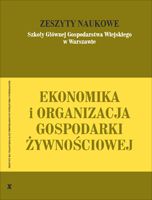Main Article Content
Article Details
BARYŁO M.: Inwestowanie na giełdzie, czyli czy warto mierzyć ryzyko? Delta 9(412) 2008.
HORBACZEWSKA B.: Analiza zmian wartości indeksu dochodowego WIG_PL i indeksów cenowych WIG_20, mWIG_40 i sWIG_80 w latach 2003-2010. Badania statutowe Kolegium Gospodarki Światowej Szkoły Głównej Handlowej pt. Prywatyzacja i restrukturyzacja przedsiębiorstw państwowych oraz rozwój sektora prywatnego w Polsce w świetle doświadczeń międzynarodowych. KGŚ SGH 2011.
JAJUGA K., JAJUGA T.: Inwestycje. Instrumenty finansowe. Ryzyko finansowe. Inżynieria finansowa. Wydawnictwo Naukowe PWN, Warszawa 1999.
JASIŃSKI G.: Ewolucyjna optymalizacja w nowoczesnej teorii portfelowej. Scientific Bulletin of Chełm, Section of Mathematics and Computer Science, nr 1/2008.
KICIA M.: Strategia inwestycyjna oparta na modelu CAPM. [w:] Strategie i instrumenty alokacji kapitału finansowego. Wydawnictwo Uniwersytetu Marii Curie-Skłodowskiej, Lublin 2004.
PUŁASKA-TURYNA B.: Statystyka dla ekonomistów. Difin, Warszawa 2011.
SZOPA A. Między ryzykiem a stopą zwrotu. Nowe instrumenty finansowe. [w:] Rynek finansowy w erze zawirowań. Wydawnictwo Uniwersytetu Marii Curie-Skłodowskiej, Lublin 2009.
WEAVER S.C., WESTON J.F.: Strategic Financial Management. Applications of Corporate Finance. Thomson 2008.
www.gpwinfostrefa.pl
www.gpw.pl/indeksy





